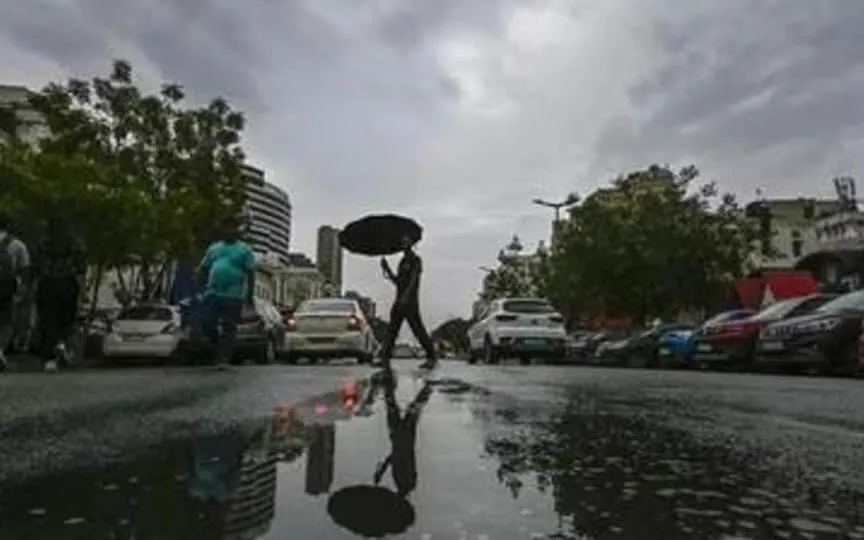IMD acknowledges difficulty in predicting severe weather events, explores new technology for AI weather forecasting
The India Meteorological Department (IMD) is aiming to enhance its weather forecast models by incorporating artificial intelligence (AI) and faster supercomputers, despite facing challenges in predicting minor severe weather events. IMD Director General Mrutyunjay Mohapatra revealed in an interview with PTI that the organization is establishing test beds in Odisha and Madhya Pradesh to gain a deeper understanding of the underlying physical processes that contribute to the development of thunderstorms and heavy monsoon rains. This research could ultimately lead to improved weather forecasts.
IMD will begin its 150th anniversary on Monday with the launch of ‘Panchayat Mausam Seva’, which aims to take weather forecasts to every farmer in every village and the National Framework for Climate Services to mainstream climate information in all sectors and activities.
Mohapatra said the IMD has come a long way from a cyclone warning in Kolkata harbor in the late 1800s to nowcasts reaching users’ mobile phones and now plans to use the latest advances in artificial intelligence (AI) and machine learning. (ML) to improve its predictive ability.
“As an old organization, IMD has weather data since 1901 and it has been digitized. Artificial intelligence is data science where we can leverage all this historical data to develop tools and methods for forecasting,” he said.
Mohapatra said that IMD has formed an expert group on AI-ML and also collaborated with NITs, IITs, IIITs, academic and R&D institutions to jointly develop tools that can be used to improve forecasting accuracy and sector-specific applications .
“Nowcast can be a very good area where AI/ML can significantly improve decision-making and weather forecasting. Similarly, in short- and medium-term forecasting, the models themselves can have AI/ML work and improve the weather forecasts of the models. and ultimately the forecasters,” he said.
The IMD chief said the weather bureau is also upgrading its high-performance computing systems to improve its numerical modeling capabilities.
“The Ministry of Earth Sciences (ME) is currently acquiring high-performance computing systems. Our capacity will increase from 10 petaflops to 30 petaflops. This will improve numerical model runtime, resolution and post-process data generation,” he said.
Faster supercomputers help IMD produce more sector-specific and location-specific information.
“At present, the resolution of the IMD-MoES weather modeling system is 12 kilometers. The aim is to make it six kilometers. Similarly, the resolution of the regional modeling system will be increased from three kilometers to one kilometer,” he said.
Mohapatra admitted that the forecast system was unable to predict phenomena such as cloudbursts and low-level severe weather events when asked about the weather bureau’s inaccurate predictions of heavy rain in southern Tamil Nadu in December.
“I encourage criticism. Criticism should be received so that we can learn and develop our forecasting system. But still there are certain challenges, such as the cloudburst phenomenon, 60cm-90cm rainfall is very exceptional. The system cannot predict this type of weather system at the moment,” said Mohapatra.
He said India had its first meteorological observatory in 1793 at Chennai and the IMD was formally established when Henry F Blanford took charge as the first Imperial Meteorological Reporter on January 15, 1875.
“We have come a long way. We have developed a very extended observation system not only on the ground, but also in the upper atmosphere, in remote areas such as seas, mountain areas and deserts. But still, there are some misses, such as cloudburst phenomenon, lighting and very small-scale severe weather phenomena,” he said.
“So there is still room for improvement in the observation system so that every weather is observed. Once it is observed, this information is used on the computing platform in numerical forecasting models for forecasting purposes. So the forecast also improves accordingly.”, Mohapatra said.
He recalled that two monstrous cyclones in the Bay of Bengal in 1864, which killed over 80,000 people and sank the merchant ships of the then British rulers and subsequent famines, had led to the formation of the IMD.
Mohapatra said the early warnings and forecasts issued by the IMD over the years have improved and there has been very little loss of life due to cyclones and heavy rains.
“The country is moving forward, early action has been taken based on the early warning given by IMD. The country is moving in that direction, the accuracy of forecast has increased by 40-50 percent in the last five years compared to the previous five years,” he said.
“We have come a long way, we have understood and I am sure the system will improve in the coming years to deal with all types of extreme weather events,” Mohapatra said.




